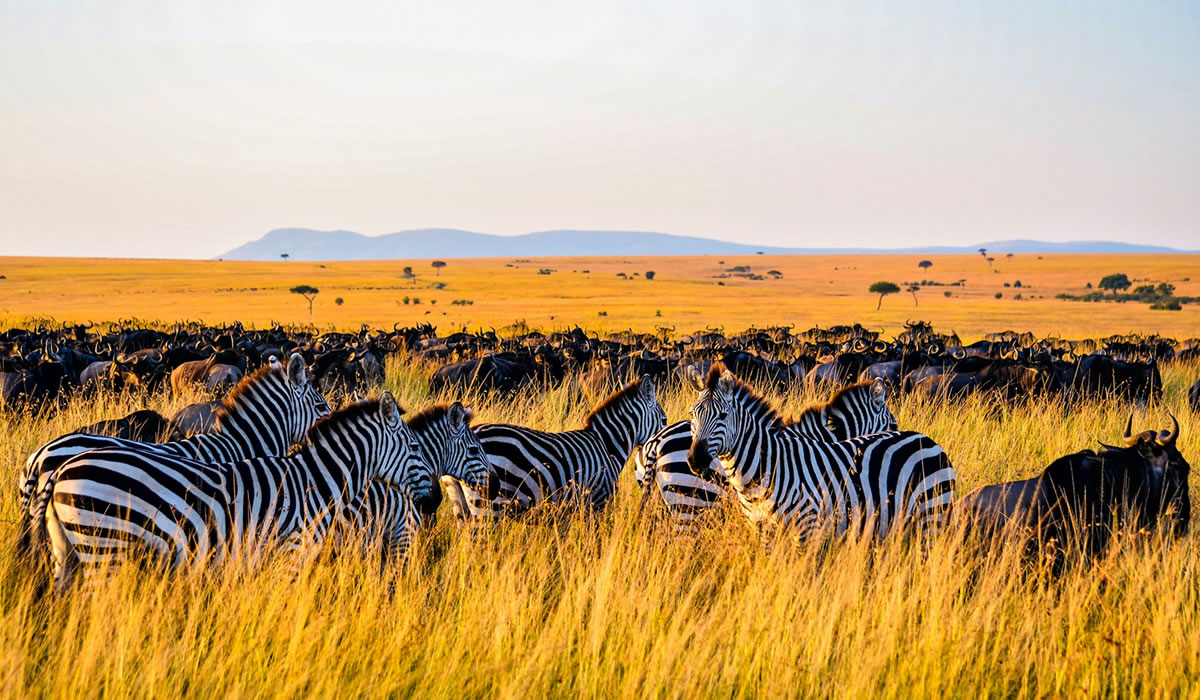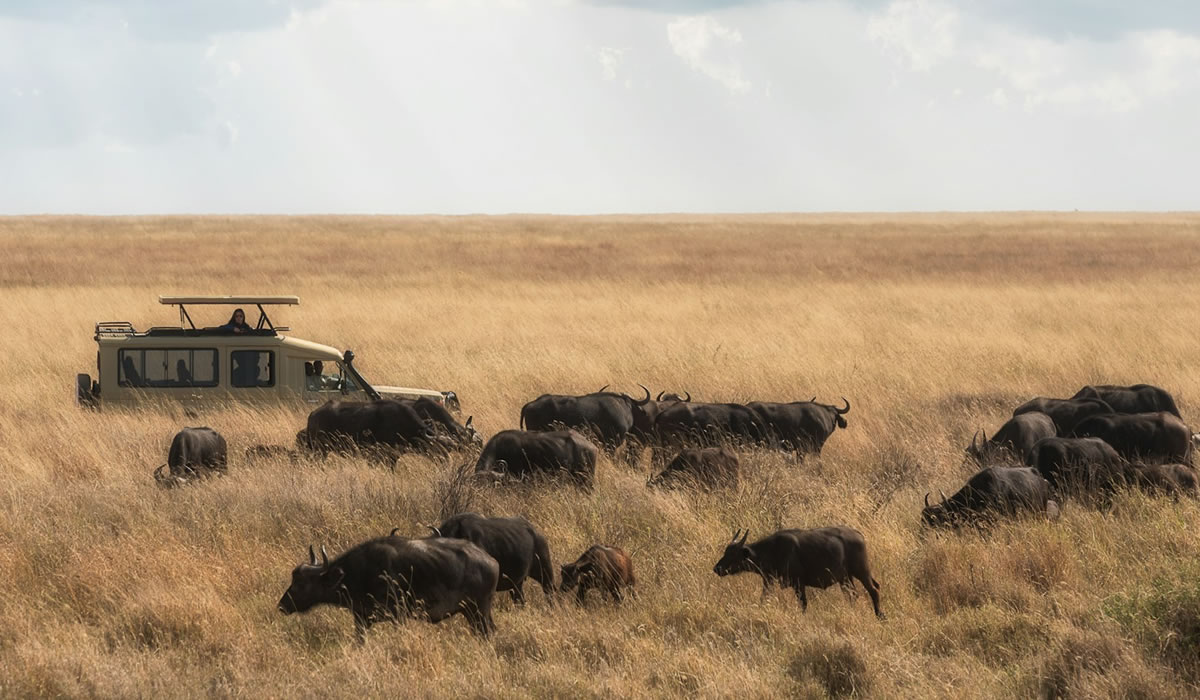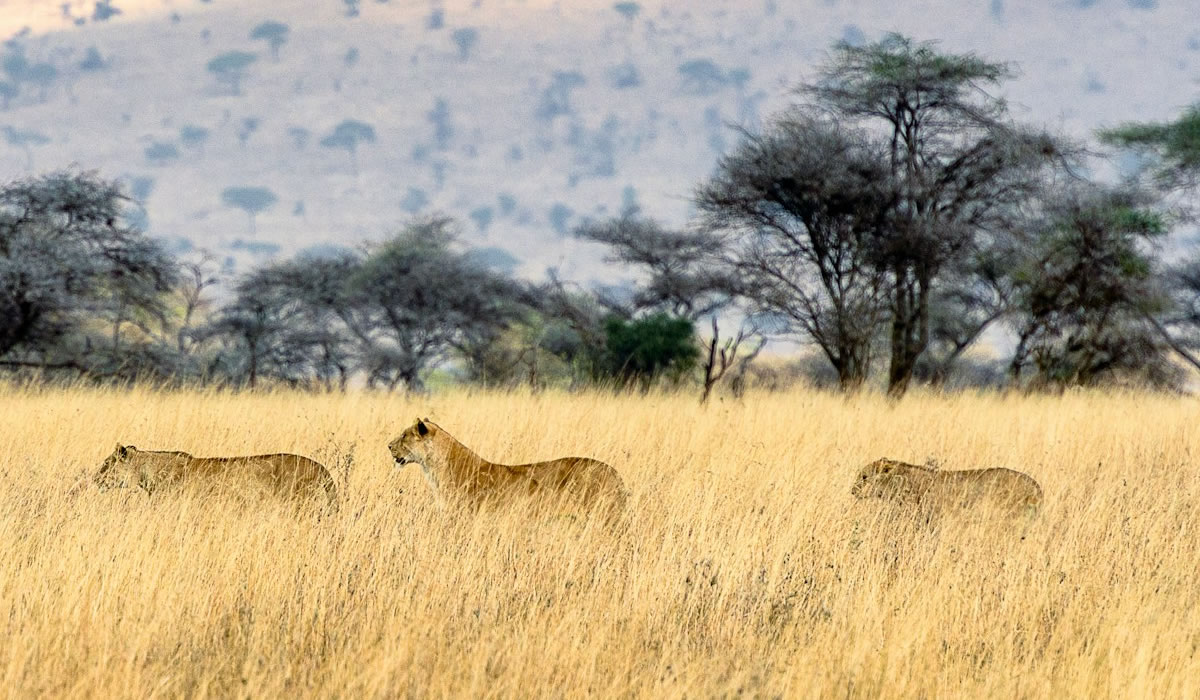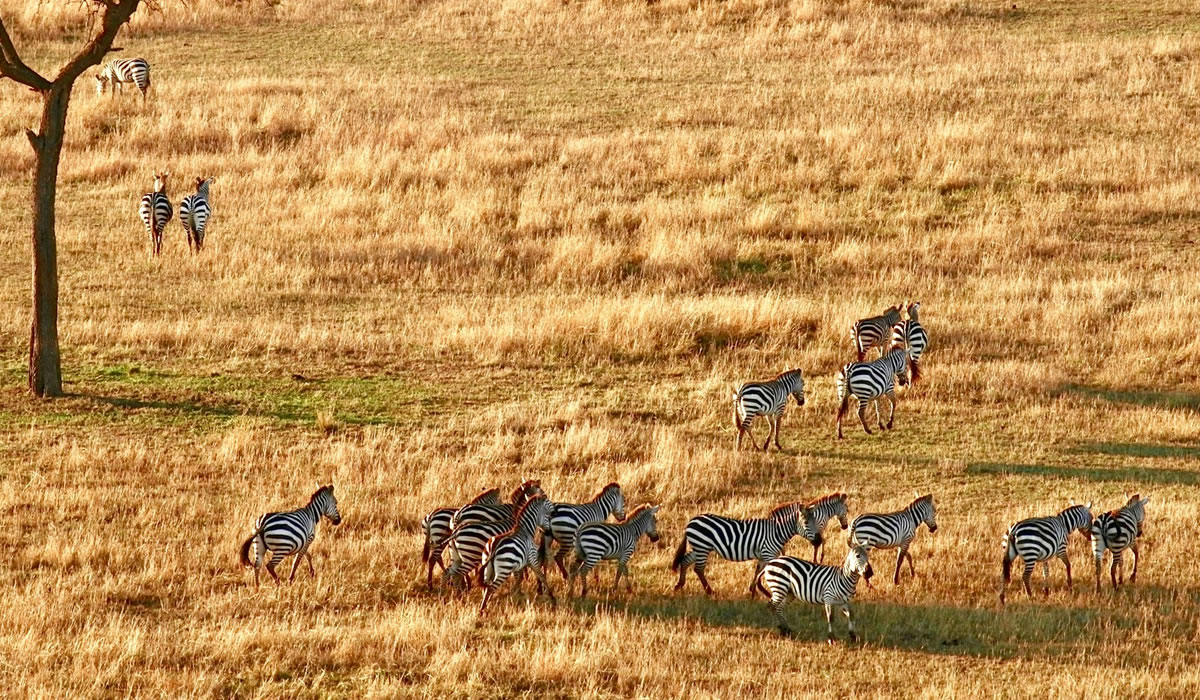Serengeti National Park is one of the most iconic and breathtaking wildlife conservation areas in the world. Located in northern Tanzania, this UNESCO World Heritage Site spans over 14,750 square kilometers and is home to an astonishing variety of flora and fauna. Renowned for its vast open plains, dramatic landscapes and incredible wildlife sightings, Serengeti National Park is the heart of the African safari experience.

History of Serengeti National Park
The word “Serengeti” comes from the Maasai word “Siringet,” which means “endless plains.” The Maasai people, who have lived in the region for centuries, gave the area its name due to the vast and seemingly infinite grasslands. In 1951, Serengeti was officially established as a national park, making it one of Tanzania’s first protected areas. The park was created to conserve the abundant wildlife and natural environment that had begun to face threats from human settlement and poaching.
Over the decades, Serengeti National Park has become a symbol of wildlife conservation in Africa. It plays a critical role in preserving one of the most significant ecosystems on the planet, including the Serengeti-Mara ecosystem that stretches into Kenya’s Masai Mara. Today, the park is managed by the Tanzania National Parks Authority (TANAPA), which ensures its protection and sustainable use.
Geography and Landscape
Serengeti National Park is part of the larger Serengeti ecosystem, which also includes the Ngorongoro Conservation Area, Maswa Game Reserve, Grumeti and Ikorongo Controlled Areas and the Loliondo Game Controlled Area. The park lies in the northwestern part of Tanzania, bordering Kenya to the north.
The Serengeti landscape is diverse, comprising open savannahs, acacia woodlands, riverine forests and rocky outcrops known as kopjes. The southeastern plains are typically dry and treeless, providing a perfect habitat for grazing animals. Central Serengeti, also known as Seronera, features a mix of grassland and woodland and is the heart of game viewing. The western corridor extends towards Lake Victoria and is dominated by riverine forests, while the northern part of the park is more hilly and wooded.

The Great Wildebeest Migration
The Serengeti is globally famous for hosting the Great Wildebeest Migration, one of the most spectacular natural events on Earth. Each year, over 1.5 million wildebeests, 200,000 zebras and hundreds of thousands of gazelles migrate in a circular route across the Serengeti-Mara ecosystem in search of fresh grazing land and water.
This migration is driven by seasonal rainfall and follows a roughly predictable pattern. It begins in the southern Serengeti around December to March, where animals give birth to thousands of calves. As the dry season sets in around May, the herds move northwest toward the Grumeti River, where they face predators like crocodiles. By July and August, they reach the northern Serengeti and cross into the Masai Mara in Kenya, with dramatic river crossings that attract tourists and filmmakers alike. In October and November, the herds begin their journey back south.
The Great Migration is one of the main reasons visitors travel to Serengeti National Park, as it offers unparalleled wildlife viewing and photo opportunities.
Wildlife and Biodiversity
Serengeti National Park is home to the “Big Five” – lions, leopards, elephants, buffalos and rhinos – making it a prime safari destination. However, its biodiversity extends far beyond these iconic animals. Visitors can encounter cheetahs, hyenas, jackals, servals, warthogs, giraffes, hippos and crocodiles. The park supports over 70 species of large mammals and more than 500 species of birds, making it a paradise for birdwatchers.
Among the bird species found in Serengeti are ostriches, secretary birds, martial eagles, kori bustards and various vultures. The diversity of habitats in the park allows for an equally diverse array of plant and insect life. The ecosystem is largely self-sustaining and supports complex food chains and ecological interactions.

Safari Activities in Serengeti National Park
Visitors to Serengeti National Park can engage in a variety of safari activities, each offering a unique way to experience the park’s natural beauty.
- Game Drives: Morning and evening game drives are the most common way to explore the park. Guided by experienced rangers or tour guides, these drives allow visitors to observe animals in their natural habitat.
- Hot Air Balloon Safaris: For a once-in-a-lifetime experience, hot air balloon safaris offer a bird’s-eye view of the Serengeti landscape and its wildlife. These early morning flights often include a champagne breakfast upon landing.
- Walking Safaris: In some designated areas, walking safaris are permitted with an armed guide. These provide a more intimate and educational way to connect with nature.
- Bird Watching: With over 500 bird species, Serengeti is an excellent destination for birding enthusiasts. Specialized birding tours are available for those who want to focus on avian life.
- Cultural Visits: Some tours include visits to nearby Maasai villages, allowing tourists to learn about the culture and traditions of the local people who coexist with the wildlife.
Best Time to Visit Serengeti National Park
The Serengeti offers excellent wildlife viewing all year round, but the best time to visit depends on what you want to see.
- January to March: This is the calving season in the southern Serengeti, particularly around Ndutu. It is an ideal time to see newborn animals and predator action.
- April to May: These months mark the long rainy season. The park is lush and green, and although some roads may be challenging to access, it is a great time for fewer crowds and lower prices.
- June to July: This is the best time to see the migration moving through the western corridor and making its way to the north. River crossings may begin during this period.
- August to October: Peak river crossing season as the herds move between the northern Serengeti and the Masai Mara in Kenya. This is an excellent time for dramatic sightings.
- November to December: The short rains bring the herds back to the southern plains. Game viewing is still good, and the landscape begins to transform into a green paradise.
Accommodations in Serengeti National Park
Serengeti National Park offers a wide range of accommodations, from luxury lodges and tented camps to budget-friendly options. Some of the most popular choices include:
- Luxury Lodges and Camps: Four Seasons Safari Lodge Serengeti, Singita Grumeti, Serengeti Bushtops and &Beyond Serengeti Under Canvas provide high-end experiences with exceptional service and amenities.
- Mid-Range Options: Serengeti Serena Safari Lodge, Kubu Kubu Tented Lodge and Mbalageti Serengeti Lodge offer comfortable accommodations with good value.
- Budget Campsites and Tents: There are several public and special campsites for travelers on a budget or those who prefer a more immersive and rustic experience.
Most lodges and camps organize their own safari drives and activities, making it easy to plan a complete itinerary.

Getting to Serengeti National Park
There are two main ways to reach Serengeti National Park: by road or air.
- By Road: Serengeti is accessible from Arusha, which is about 325 kilometers away. The drive passes through other notable parks like Lake Manyara and the Ngorongoro Conservation Area. While scenic, this route takes 7 to 8 hours and can be quite bumpy.
- By Air: Daily scheduled flights connect Arusha and other major cities like Dar es Salaam to airstrips within the park, such as Seronera, Grumeti and Kogatende. Flying is faster and more convenient, especially for those on a tight schedule.
Park Fees and Regulations
Visitors must pay park entry fees regulated by the Tanzania National Parks Authority. As of the latest update, the entry fee for non-resident adults is around $70 per person per day during the high season. Children, residents and citizens pay reduced rates. In addition to entry fees, some camps and lodges charge concession or camping fees.
It is important to follow park regulations, such as not feeding the animals, staying within designated areas and keeping a safe distance from wildlife. Licensed tour guides and operators are familiar with these rules and help ensure a safe and ethical safari experience.
Why Visit Serengeti National Park?
Serengeti National Park offers a quintessential African safari experience. It combines stunning scenery, exceptional wildlife diversity and a chance to witness one of the world’s greatest natural events, the wildebeest migration. Whether you are a first-time visitor or a seasoned traveller, the Serengeti promises unforgettable moments and unmatched photographic opportunities.
From the drama of predator hunts to the serenity of sunrise over the plains, Serengeti captures the essence of wild Africa. It is more than just a destination, it is a journey into nature at its most raw and beautiful.
A visit to Serengeti National Park is an experience of a lifetime. Its endless plains, iconic wildlife and cultural richness make it one of the most sought-after safari destinations in the world. For travellers seeking adventure, relaxation and inspiration, Serengeti delivers on all fronts. When planning your Serengeti safari, consider the best times to visit, select accommodations that match your style and budget and always travel with a licensed operator who respects the ecosystem.

